Growing up with a mom who is a health nut, I was involuntarily subjected to her healthy eating trends. Last year, it was salt. This year, my mom’s newest health trend has been sugar, specifically added sugar.
Usually, I ignore her, thinking that I’m a healthy enough person already. I run three times a week and try to limit my desserts. That means I’m healthy, right? Wrong. Added sugar can lead to diabetes, heart disease, high blood pressure, pancreatic cancer, and various other health issues.
So what do you do to cut out added sugar out of your diet? Stop eating dessert and stop drinking soda? Yes, but that’s not all. Turns out added sugar is in your basic food groups such as yogurt, milk, and bread.
#SpoonTip: The recommended daily sugar intake is 6 teaspoons for women (24 grams) and 9 teaspoons for men (36 grams).
1. Yogurt
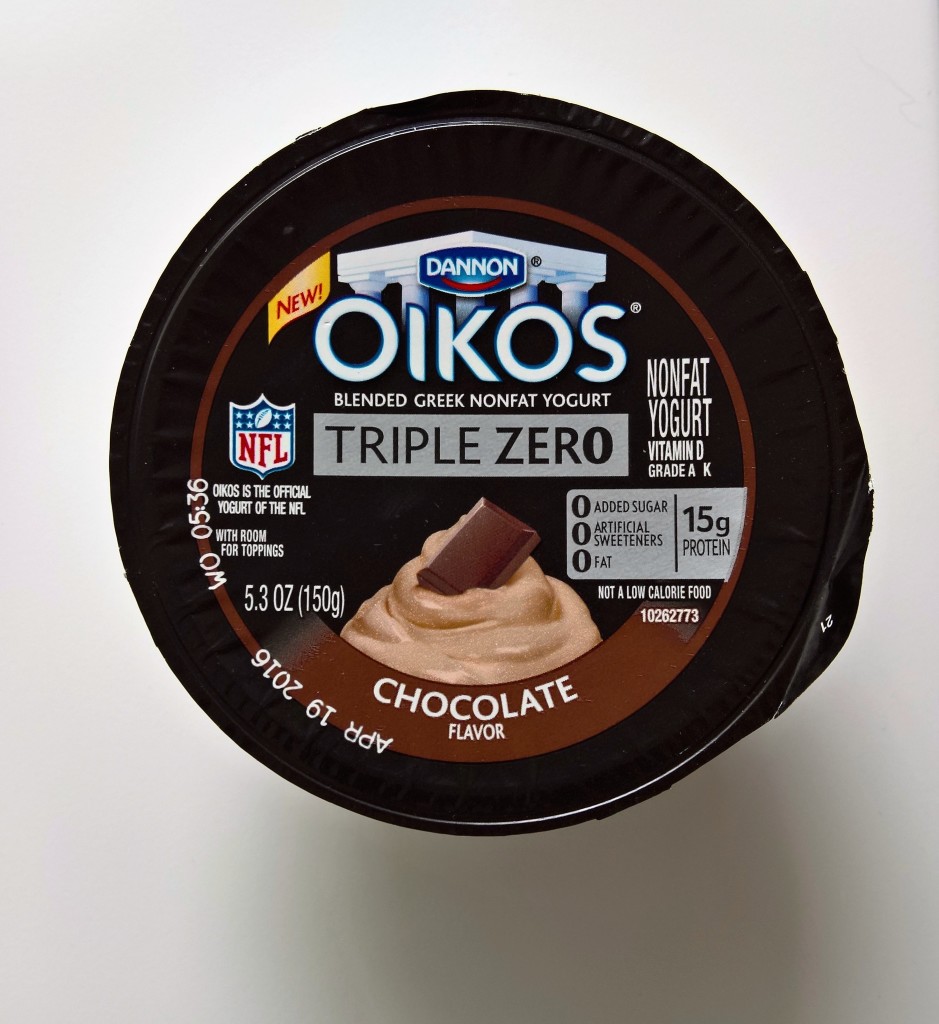
Photo by McKenna Franklin
Due to the natural sugars in lactose, a plain yogurt will have on average 7 – 8 grams of sugar. What most people don’t know is that once yogurt companies add fruit flavoring, the sugar can often skyrocket to 15 – 25 grams. As good as those Yoplait yogurts are, most of them have 18 grams of sugar. Strawberry flavored Yami yogurt has 21 grams of sugar, and strawberry flavored Silk yogurt has 14 grams of sugar.
A good alternative to these sugary yogurts is Dannon Oikos Triple Zero Greek Nonfat Yogurt. Not only are they delicious, but each serving has on average 7 grams of sugar plus 6 grams of fiber and 15 grams of protein. No added sugar and no artificial sweeteners. The chocolate flavor, shown above, makes for a great snack if you have a chocolate craving.
#SpoonTip: If you have a hard time figuring out how much added sugar is in your yogurt, use plain yogurt as your baseline. Compare the plain flavor to another flavor, like strawberry. If the plain flavor has 7 grams and the strawberry has 20, that means the strawberry yogurt has 13 grams of added sugar.
2. Bread
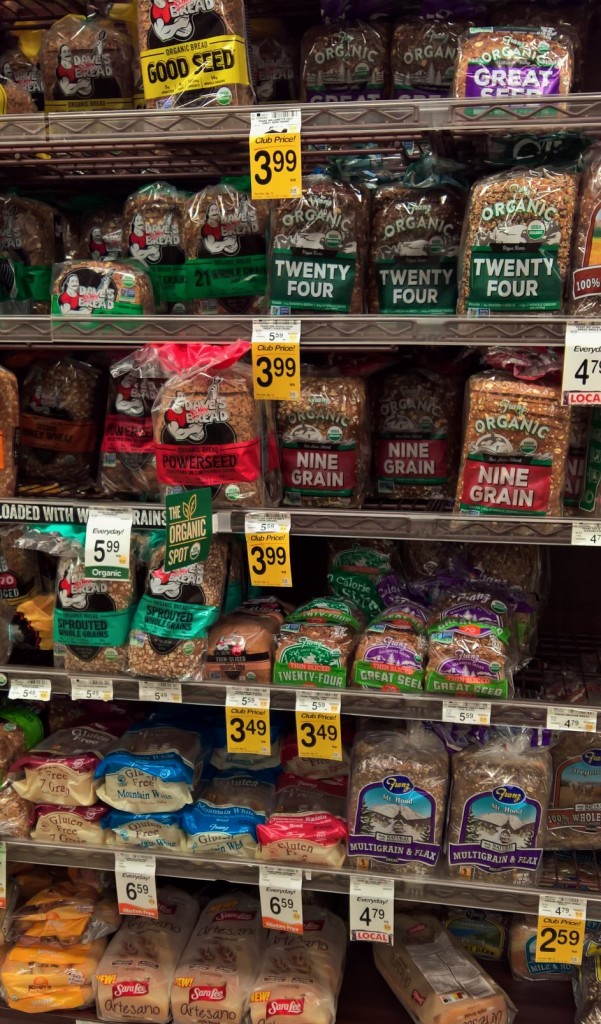
Photo by McKenna Franklin
Ideally, bread should only have 0 – 1 grams of sugar in it. Any bread with more sugar most likely has added sugar, such as high-fructose corn syrup. Check the ingredients before you buy as there are roughly 56 different names for sugar. I recommend the Alvarado Street Bakery Sprouted Whole Wheat Bread as it only has 1 gram of sugar.
#SpoonTip: If the food you are eating has no naturally occurring sugar in it (such as fruit or milk) then the sugar it contains is added sugar.
3. Milk
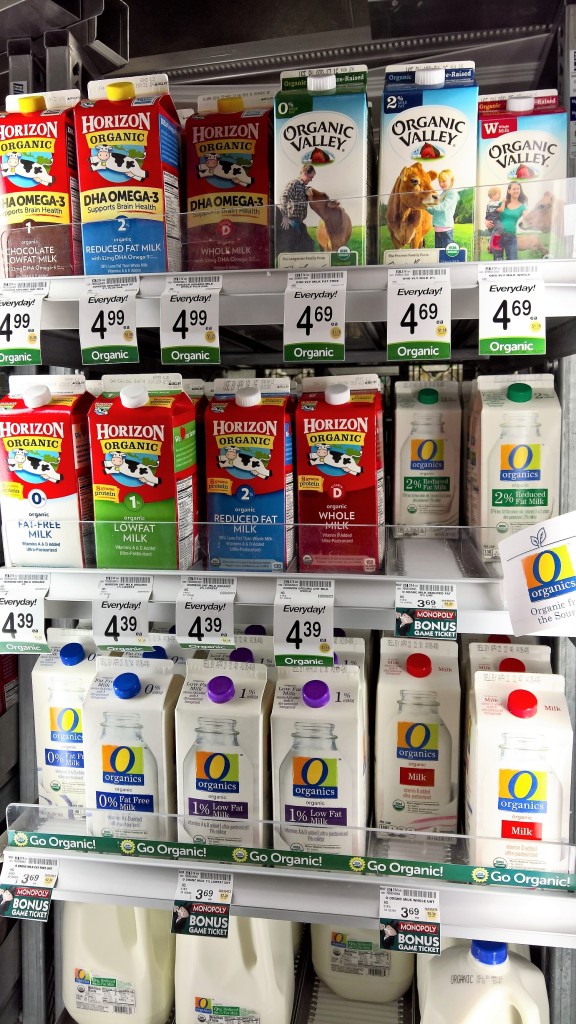
Photo by McKenna Franklin
As with yogurt, milk has some natural sugars from lactose. An average serving size of milk will have around 10 – 12 grams of sugar. However, be careful when drinking chocolate milk or any kind of other sweetened milk. For instance, 1 serving Horizon milk has 12 grams of sugar, whereas their chocolate milk has 22 grams of sugar.
For all of you athletes out there who guzzle down chocolate milk post-workout for its protein benefits, you should also be aware of its sugar content. If you are watching your sugar intake, Silk soy milk, almond milk and coconut milk are good alternatives since none of them have lactose. Just make sure to look for the unsweetened varieties.
4. Odwalla Smoothies
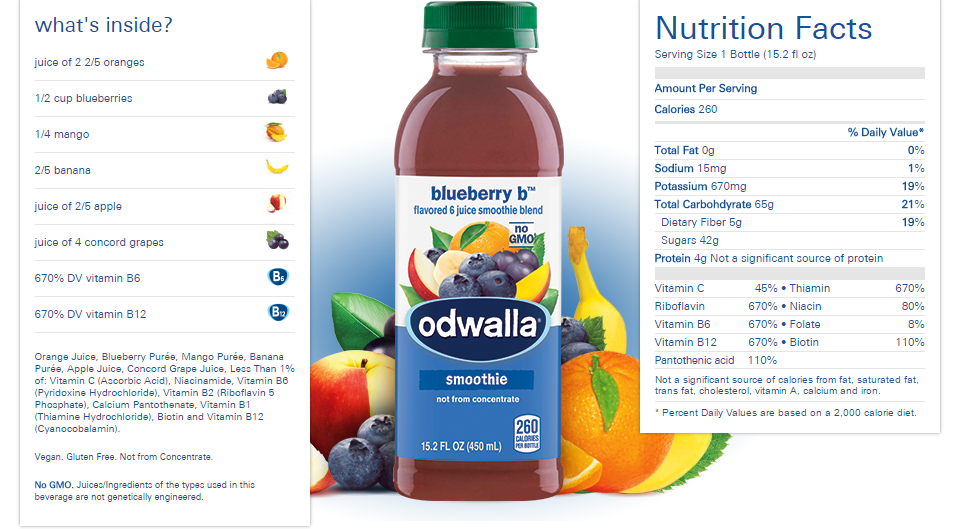
Photo courtesy of odwalla.com
As one of the more popular go-to smoothie drinks when you’re in a rush, these smoothies pack a lot of added sugar in them. The Blueberry B flavor has a shocking 42 grams of sugar. Yes, there is fruit in these and fruit does have natural occurring sugar. However, the first ingredient in many of these smoothies is orange juice. The bad new is that orange juice is probably the most sugar filled juice you could drink. To help cut sugar out of your smoothies, try making one of your own instead.
5. Quaker Instant Oatmeal
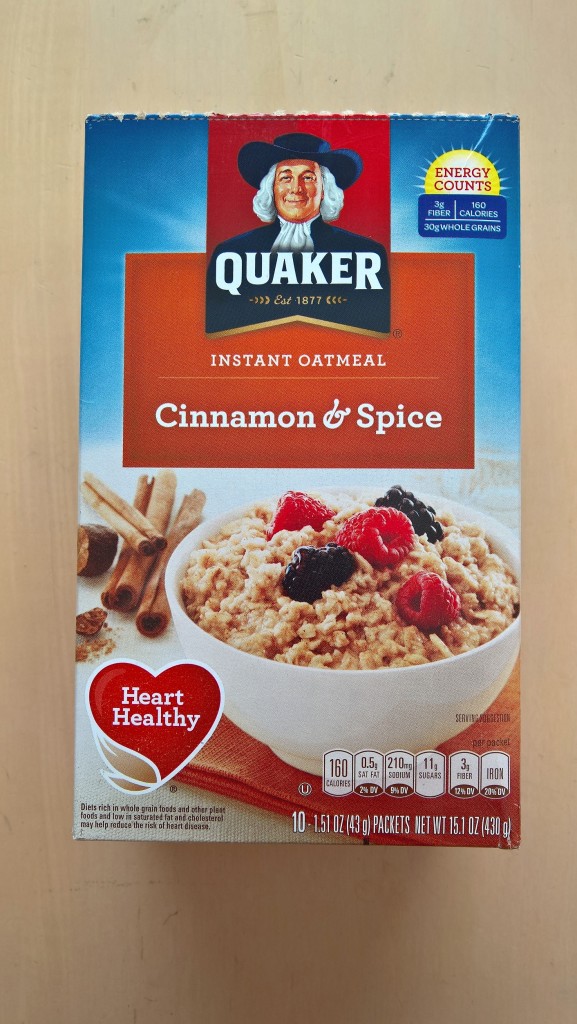
Photo by McKenna Franklin
I’m a big fan of Quaker Instant Oatmeal, so I was a little disheartened to learn that they contain quite a bit of added sugar. For instance, the Cinnamon and Spice flavor contains 11 grams. Lucky for me, Quaker also makes a few selected “Lower Sugar” flavors. The result? The Maple and Brown Sugar Lower Sugar flavor has 4 grams instead of 12 grams of sugar. If you eat instant oatmeal often, make sure to double check to see if they have a lower sugar option. Or, check out these tips to make your own homemade oatmeal.
6. Granola Bars
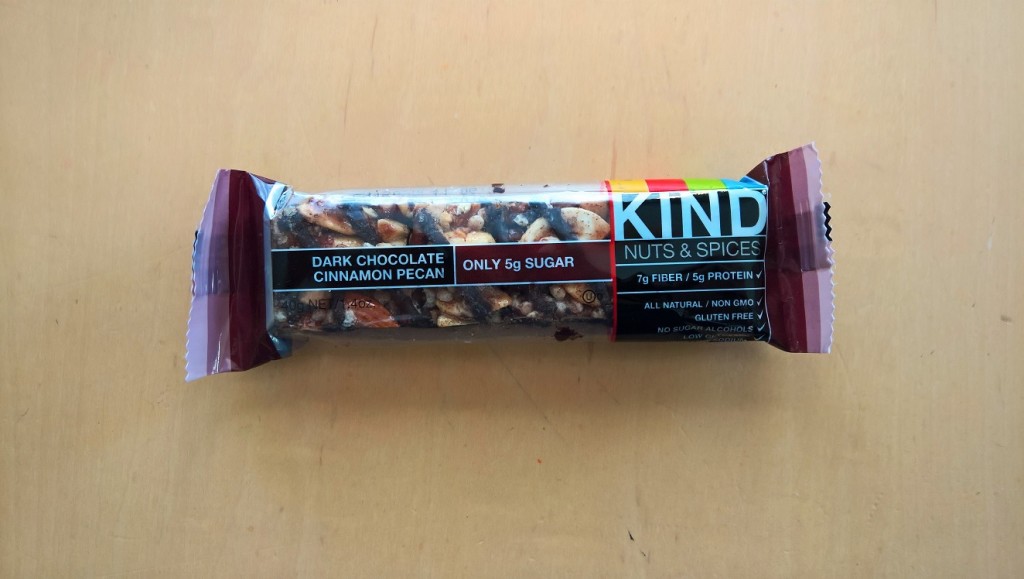
Photo by McKenna Franklin
Granola bars are such a versatile snack. No break between classes? Need a snack to eat during a hike or while driving in a car? Grab a granola bar. They’re easy to pack and come in a wide variety of flavors. However, they are often filled with high fructose corn syrup and sugar. Aim to keep these granola bars under 7 grams of sugar. KIND bars are great as they offer a few flavors with only 4 grams of sugar, such as Cashew and Ginger Spice.
#Spoontip: Try to keep the ingredients list to under 10 items for any processed foods. The fewer, the better.
7. Dried Fruit
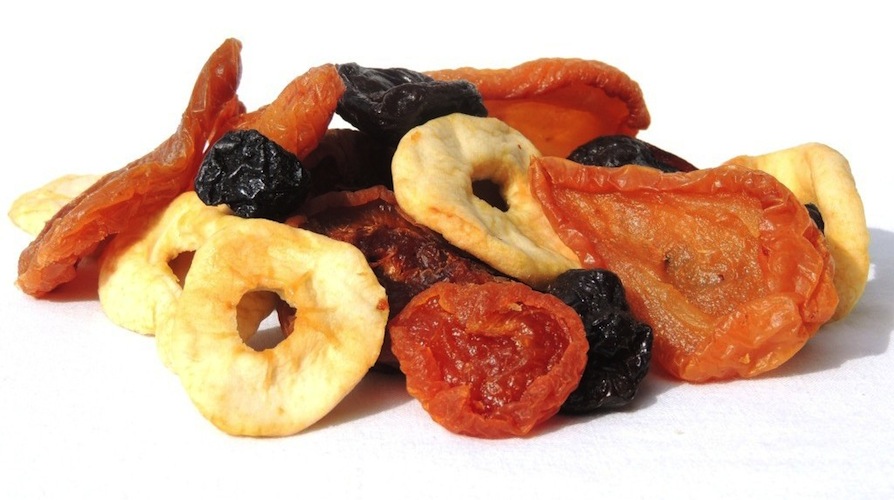
Photo courtesy of Faron Business Developments
Dried fruit is another great snack option, but to avoid added sugar you need to make sure you’re buying the right brands. Certain dried fruits are made sweeter by adding sugar during processing. Philippine Brand Dried Mangoes are considered sweetened mangoes for a reason; they contain a whopping 32 grams of sugar per 6 pieces. A better alternative are Trader Joe’s Dried Fruit Just Mango Slices. They have no added sugar and are as natural as dried mango can be.
8. Starbucks Iced Coffee
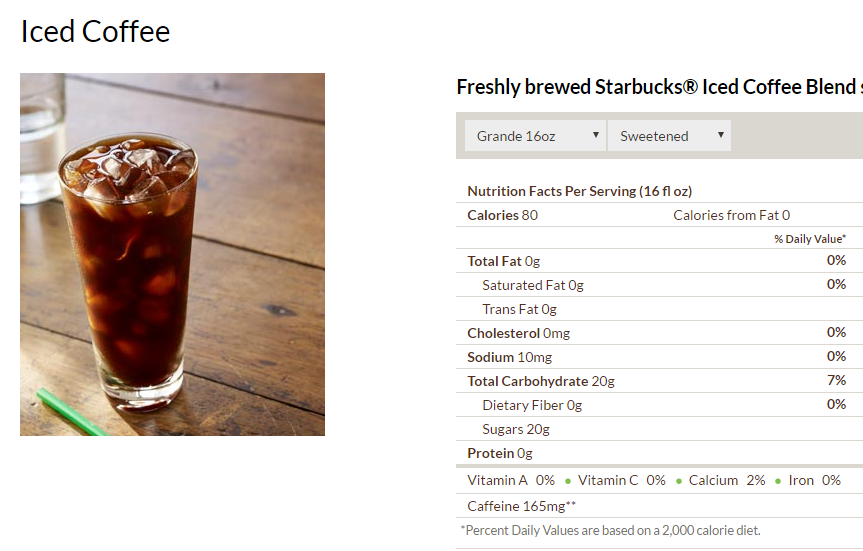
Photo courtesy of starbucks.com
While most of us know that Starbuck Frappuccinos are extremely unhealthy for you, we often forget to consider the other menu items. Surprisingly, iced coffee has a lot of sugar content as well. A sweetened Grande Iced Coffee has 20 grams of sugar. That’s almost your entire daily serving of sugar. Is a 16oz drink worth it? No? Try the Starbucks Cold Brew Coffee instead, which has 0 grams of sugar. If that isn’t enough incentive to switch, check out these reasons why you should.
9. Gatorade
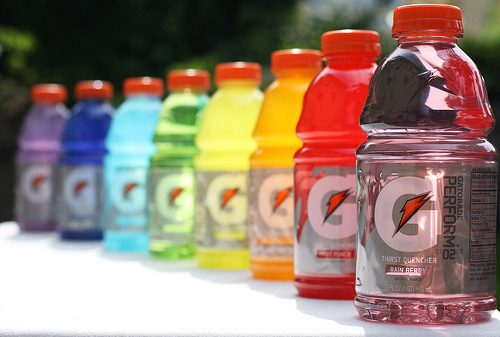
Photo courtesy of tumblr.com
I know, I’m guilty of this one too. There’s nothing better than a cold Gatorade after a workout on a summer day. Okay, maybe there is, but Gatorade is supposed to be a healthy option. But guess what? They also contain 21 grams of sugar. A better option after working out would be to drink water, either by itself or add electrolyte tabs like Nuun, which only have 1 gram of sugar.




